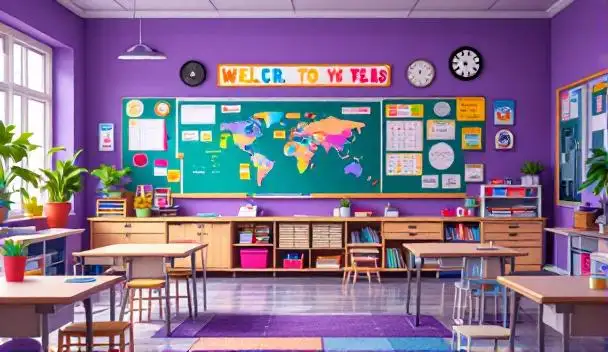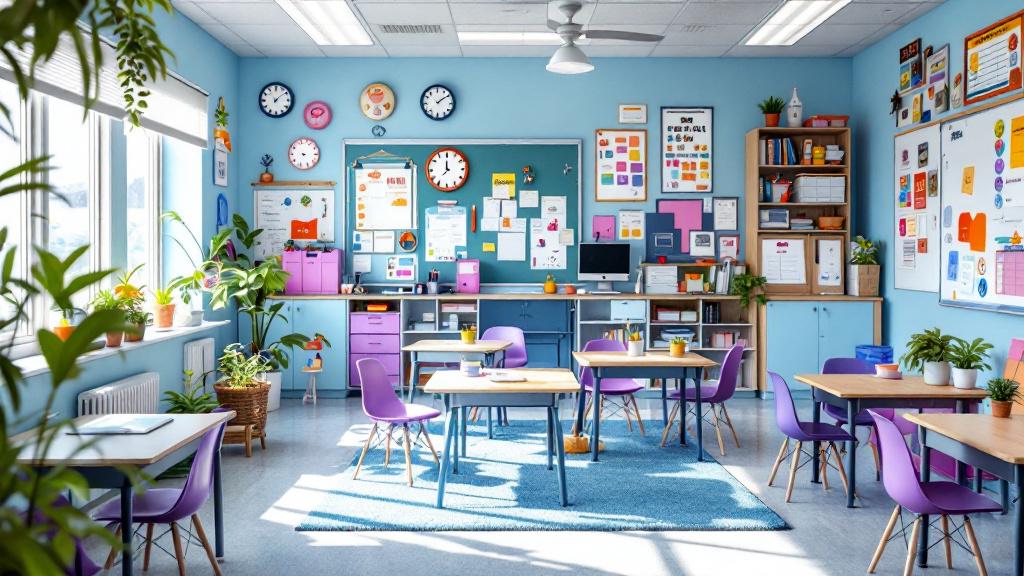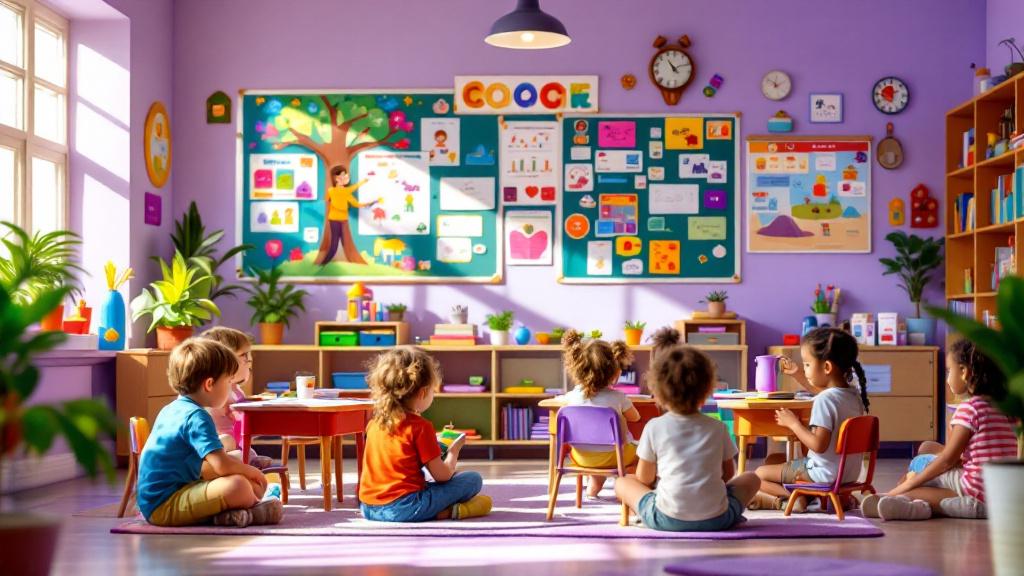Understanding the Critical Balance of Structure and Flexibility in ABA
Home-based ABA therapy is a dynamic approach that requires a nuanced balance between consistent routines and adaptable strategies. This article explores effective methods and best practices to ensure children with autism benefit from structured environments that promote learning, while also embracing the flexibility needed to meet individual needs and handle life's unpredictability.
Establishing a Predictable Routine with Room for Adaptation
How do creating daily routines using visual schedules support children with autism?
Visual schedules are a fundamental tool in establishing daily routines for children with autism. They provide a clear, visual representation of activities planned throughout the day, such as meals, therapy sessions, playtime, and bedtime. Using pictures, icons, or written words, these schedules help children anticipate what’s next, reducing confusion and anxiety.
By seeing their daily plan laid out, children become more independent in transitioning between activities. It also reinforces understanding of routine order and expectations. Visual schedules can be customized to match each child's learning style and developmental level, enhancing engagement and compliance.
In what ways can therapy be seamlessly incorporated into natural routines like mealtimes or play?
Incorporating therapy into natural routines involves embedding skill-building activities within everyday life events. For example, during mealtimes, children can practice requesting food, following a sequence of steps, or sharing. During play, therapists and parents can create opportunities for social interaction, turn-taking, or language development.
Transforming routine activities into learning experiences not only makes therapy more meaningful but also promotes generalization of skills. It allows children to practice newly acquired skills in familiar contexts, increasing the likelihood of long-term retention and use.
How should routines be adjusted based on the child's progress and daily mood?
Flexibility is essential when managing routines for children with autism. Regular assessment of the child's progress and mood helps determine if routines need modification. If a child is consistently alert and motivated, routines can be more structured to maximize skill acquisition.
Conversely, if a child appears overwhelmed, fatigued, or upset, routines should be adapted to reduce stress—such as shortening sessions, introducing calming activities, or allowing extra breaks. Monitoring the child's responses and communicating with therapists and family members ensures routines remain supportive.
Adjustments might include shifting focus to preferred activities, adjusting the timing of sessions, or incorporating sensory breaks. This responsiveness fosters a positive environment, encourages participation, and supports ongoing development.
| Strategy | Implementation | Benefits |
|---|---|---|
| Visual schedules | Use pictures or icons to outline daily activities | Reduces confusion, promotes independence |
| Embedding therapy into routines | Incorporate skill practice during daily activities like meals and play | Enhances generalization of skills |
| Routine flexibility | Adjust timing and activities based on child’s mood and progress | Maintains engagement and reduces stress |
| Family collaboration | Engage family in planning and executing routines | Ensures consistency and support |
| Use of technology | Utilize scheduling apps or timers for visual cues and reminders | Improves scheduling efficiency |
Creating a consistent yet adaptable schedule based on these strategies helps children with autism thrive. When routines meet individual needs and incorporate natural daily activities, children not only learn more effectively but also develop resilience and confidence to navigate their environment.
Using Visual Supports to Reinforce Routine Consistency and Flexibility

What strategies and best practices support scheduling and routines in home-based ABA therapy?
Creating a structured yet adaptable environment is central to effective ABA therapy at home. Establishing a predictable daily routine assists children with autism in understanding what to expect, which reduces anxiety and enhances their focus.
Visual supports are especially helpful in reinforcing these routines. Visual schedules, social stories, timers, and picture cues serve as concrete tools that help children understand and anticipate upcoming activities. For example, a visual schedule might include pictures representing breakfast, therapy sessions, outdoor play, and bedtime, making abstract concepts more tangible.
Timers and picture cues can also signal transitions, helping children shift smoothly from one activity to another. Using visual cues for timers, like a sand timer or a countdown picture, encourages independence in managing time and expectations.
Gradually introducing small changes into routines allows children to adapt without feeling overwhelmed. This might include slightly adjusting the timing of activities or introducing new cues slowly. Monitoring the child's response ensures the adjustments support their comfort and learning.
Consistent reinforcement and family involvement are vital. Family members practicing routines using these visual tools strengthen skill generalization and promote consistency across environments. Open communication with ABA therapists about schedule adjustments also helps tailor routines effectively.
Ultimately, the combination of visual supports, gradual change, and collaborative efforts creates a flexible yet predictable routine. This balance promotes engagement, skill acquisition, and reduces behavioral challenges, facilitating a supportive and effective home-based therapy environment.
Integrating Therapy into Daily Life Activities for Skill Generalization

How does consistent scheduling support children with autism in therapy?
Consistency in therapy scheduling provides children with autism a predictable pattern that they can anticipate. This predictability reduces anxiety and confusion, enabling children to focus better during sessions. Regularly scheduled therapy sessions also facilitate routine formation, which is crucial for establishing expectations and reinforcing learned behaviors.
What techniques can be used for implementing ABA therapy at home?
Efficient home-based ABA therapy employs various techniques such as positive reinforcement, which encourages desirable behaviors by rewarding them; discrete trial training that breaks skills into small steps; and natural environment teaching (NET), which integrates learning into everyday activities. Other methods include modeling, prompts, reinforcement schedules, task analysis, and errorless learning — strategies designed to promote skill acquisition while minimizing frustration.
How should an ABA session be structured to maximize learning?
An effective ABA session starts with a thorough assessment and clear goal-setting, ideally involving collaboration with Board Certified Behavior Analysts (BCBAs) and family members. The session should focus on specific, measurable objectives targeting areas like communication, social skills, or daily living. Use evidence-based techniques such as discrete trial training or NET to deliver interventions. Incorporating positive reinforcement—like meaningful rewards or engaging activities—can motivate children and promote desired behaviors. The environment should be sensory-friendly and supportive, with activities tailored to the child's interests. Continuous monitoring and flexible adjustments ensure the child's progress, addressing any stagnation or behavioral challenges, and helping generalize skills across various settings.
How can routines be transformed into learning opportunities?
Daily routines can be optimized for learning by turning ordinary activities into opportunities for skill development. For example, during snack time, children can practice requesting items or naming colors. During dressing routines, they can learn fine motor skills or sequence skills. Visual schedules can be used to clarify expectations, and every routine can be paired with targeted interventions to teach communication, social, or adaptive skills.
In what ways can natural environment teaching (NET) help with skill generalization?
NET involves teaching skills within the natural contexts of daily life, such as shopping, playing, or household chores. This approach helps children generalize skills across environments and routines, making learning more functional and meaningful. For example, asking for items at the grocery store or following multi-step instructions during play fosters real-world skills. NET also leverages children’s interests, making learning more engaging and spontaneous.
How does balancing routine with flexibility benefit children with autism?
A blend of consistent routines and adaptable schedules supports children in managing their expectations while also being resilient to changes. Structured routines build a sense of security and promote skill acquisition, while flexibility allows adjustment for unexpected events or variations in the child's mood and needs. This balance helps children develop coping skills, manage anxiety, and improve their ability to handle transitions.
How can families incorporate ABA principles into everyday activities?
Families can integrate ABA by transforming daily routines into learning moments, using visual aids to clarify expectations, and reinforcing skills immediately. Active participation, such as practicing communication, social, or self-help skills during chores, outings, or leisure activities, fosters generalization. Training family members on ABA techniques enhances consistency and supports the child's progress outside formal therapy sessions.
What tools and strategies support effective schedule integration?
| Strategy | Description | Benefits |
|---|---|---|
| Visual schedules | Use pictures or symbols to outline daily activities | Improves understanding and predictability |
| Technology applications | Scheduling apps or communication platforms | Facilitates adjustments and sharing of progress |
| Collaboration and open communication | Regular check-ins between parents and therapists | Ensures consistency and timely modifications |
| Flexibility and backup plans | Having buffers and alternative plans for disruptions | Maintains continuity despite unforeseen events |
| Family involvement and training | Educating caregivers on ABA techniques | Reinforces learning and skill generalization |
Why is ongoing communication essential in therapy planning?
Regular, open communication between therapists and families helps tailor the schedule to meet the child's changing needs and life circumstances. Sharing feedback and observations allows for timely adjustments, promotes consistency, and ensures that therapy remains aligned with developmental goals. This collaborative approach supports better engagement and progress.
How can special events and holidays be managed effectively?
Planning ahead is critical for managing disruptions during vacations or celebrations. Adjust routines to accommodate sensory needs and involve the child in preparing for changes. Flexibility combined with preparation helps prevent stress and makes events more enjoyable while maintaining therapy goals.
What role does family self-care play in supporting therapy?
Caring for children with autism can be demanding. Prioritizing parent and caregiver self-care helps maintain their emotional well-being, reducing burnout, and increasing their capacity to support their child's learning. Establishing a strong support network and sharing responsibilities also promote a positive environment conducive to therapy and development.
Incorporating these strategies into daily routines ensures that ABA therapy is not just confined to sessions but becomes an integral part of life. This holistic approach fosters continuous learning, skill generalization, and long-term success for children with autism.
Tailoring Routines to Individual Needs through Observation and Data

How can routines in ABA therapy be adapted to meet individual needs?
Creating effective routines in ABA therapy requires a personalized approach that considers each child's unique responses and preferences. Observing how a child reacts to various activities allows therapists and parents to identify what motivates and engages the child.
By gradually adjusting activities—adding preferred toys, incorporating sensory stimuli, or aligning tasks with the child's interests—therapists can craft routines that are both meaningful and motivating. Visual supports such as picture schedules help establish predictability, reducing anxiety and fostering independence.
Incorporating play-based and naturalistic teaching methods—like child-led play or incidental teaching—facilitates skill development in real-life contexts. These strategies help children generalize skills beyond structured sessions, whether at home, in the community, or at school.
Tailored routines also employ individualized reinforcement systems, ensuring that positive behaviors are consistently encouraged. Using visual cues and breaking tasks into manageable steps make routines accessible and comfortable.
To keep routines aligned with a child's evolving needs, ongoing assessment and data collection are crucial. Regular monitoring allows for adjustments based on progress, ensuring the routine remains effective and engaging.
Ultimately, adapting ABA routines through careful observation and data-driven modifications supports the child's growth, confidence, and ability to apply learned skills across various settings.
Balancing Structure with Flexibility: The Core of Effective ABA Routines
How can ABA routines be tailored to incorporate both structure and flexibility?
Creating a balanced ABA routine involves designing a clear, predictable framework that offers stability for children with autism while also allowing room for adaptation to their evolving needs. One effective way to achieve this is by establishing visual supports such as schedules, social stories, or cue cards. These tools help children anticipate daily activities, reducing anxiety and promoting independence.
At the same time, flexibility can be integrated through active collaboration with parents and caregivers. Regular communication and shared decision-making enable adjustments based on the child’s responses, mood, or unforeseen events. For example, if a child is having a difficult day, the routine can be modified to include more breaks or different activities.
Incorporating naturalistic teaching methods like Natural Environment Training (NET) allows learning to happen in real-life situations, promoting generalization and adaptability. This approach complements structured techniques such as Discrete Trial Training (DTT), creating a comprehensive plan that emphasizes consistency while supporting spontaneous skill use.
Gradually introducing small, positive changes—such as changing the order of activities or incorporating new tasks—helps children become accustomed to variability without feeling overwhelmed. These small adjustments foster resilience and encourage flexibility.
Ongoing assessments and close collaboration with professionals are crucial to personalize routines effectively. This process ensures routines stay relevant to the child's developmental progress, reinforcing learning and behavioral growth while maintaining a supportive, adaptable environment.
In summary, blending clear routines with adaptable strategies fosters a nurturing space where children can thrive, build confidence, and develop essential skills.
Handling Transitions and Unexpected Disruptions Effectively
Managing triggers and providing support during transitions
Transitions—such as moving between activities or environments—can pose challenges for children with autism. Recognizing potential triggers, such as loud noises or unfamiliar routines, helps caregivers implement strategies to ease these changes. Using visual supports like picture schedules or social stories clarifies what to expect, reducing anxiety. Moreover, offering reassurance and gradually introducing transitions can build confidence. For example, giving advance notice of upcoming changes and using calming techniques, like deep breathing or sensory tools, helps children adapt more smoothly.
Visual supports and calming techniques
Visual supports are essential tools for managing transitions and interruptions. These include visual schedules, countdown timers, or cue cards that prepare children for upcoming events and clarify expectations. Consistently using these supports reinforces understanding and provides a sense of predictability.
Calming techniques, such as sensory breaks, deep pressure, or comfort objects, help soothe children during stressful moments. Incorporating calming strategies during or after transitions ensures that children regain composure and remain receptive to learning.
Flexible planning for interruptions
No schedule is immune to unexpected disruptions, whether due to family emergencies, therapist cancellations, or environmental factors. Building flexibility into the routine involves planning buffer times and having backup activities ready. For instance, if a session is delayed, switching to a preferred calming activity can maintain engagement.
Open communication with therapists and family members supports quick adjustments. Developing contingency plans, like alternative locations or virtual sessions, ensures continuity of therapy. This adaptable approach minimizes frustration and reinforces resilience, allowing children to learn that change is manageable.
What does it mean to establish flexible responding in ABA?
Establishing flexible responding in ABA involves teaching individuals to adapt their behaviors and responses to changing environmental conditions, rather than rigidly following a fixed pattern. It emphasizes enhancing the person's ability to generalize skills across different settings, stimuli, and situations, which is crucial for functional independence. Techniques such as systematic task analysis, varied instruction, and reinforcement strategies are used to promote adaptability. This flexibility helps reduce maladaptive behaviors associated with rigidity and supports improved social, daily living, and communication skills. Overall, flexible responding reflects an individual's capacity to respond effectively and adaptively in diverse and dynamic environments.
What guidance exists for optimizing therapy outcomes through balancing structure and flexibility?
To optimize therapy outcomes through balancing structure and flexibility, practitioners should establish a solid framework rooted in evidence-based protocols while tailoring interventions to individual patient needs and preferences. Incorporating principles from integrative health—such as considering the whole person, fostering therapeutic partnerships, and promoting resilience—enhances treatment effectiveness. Flexibility within fidelity allows therapists to adapt specific components of therapy based on patient characteristics, feedback, and progress, without compromising core principles. Continuous monitoring of process and outcome measures guides necessary adjustments, ensuring interventions remain responsive and effective. Ultimately, integrating a holistic, patient-centered approach rooted in collaboration and adaptability fosters better engagement, outcomes, and overall well-being.
Supporting Families and Caregivers for Sustained Success
How can involving family members actively improve therapy outcomes?
Active family involvement is essential in ABA therapy because it creates a consistent environment for the child. When family members participate, they reinforce skills learned during sessions and help generalize these skills to daily routines. This collaboration fosters stronger bonds between caregivers and the child, making therapy more effective. Family participation also ensures that the child's progress is supported across different settings, increasing the likelihood of long-term success.
How does training parents and siblings on ABA techniques contribute to ongoing development?
Training parents and siblings equip them with specific strategies to support the child's progress at home and in everyday situations. It promotes consistency in behavior management and skill reinforcement, which are crucial for learning and independence. When family members are knowledgeable about ABA techniques, they can respond to challenging behaviors more effectively and celebrate successes, turning everyday moments into learning opportunities.
Why is building a support network important for families and caregivers?
Building a support network provides families with emotional encouragement, practical advice, and shared experiences. Connecting with therapists, other parents, and community resources helps caregivers feel less isolated and more empowered to handle challenges. A strong support system facilitates ongoing education about autism and ABA, encourages shared problem-solving, and promotes resilience within the family.
How do structured social interactions advance social skills?
Supporting social skills involves planning structured social interactions with room for spontaneity, which fosters social development. Carefully designed interactions enable children to practice turn-taking, communication, and sharing in a safe environment. By gradually introducing spontaneous elements, children learn to adapt and respond flexibly, helping them build confidence and improve social competence.
What strategies exist for balancing structure and flexibility in therapy?
Balancing therapy with structure and flexibility involves establishing a clear framework based on evidence-based practices while allowing adaptations to meet the child's evolving needs. Maintaining consistency through visual schedules and routines provides a sense of security. At the same time, therapists and families should remain open to adjustments based on the child's mood, progress, or unforeseen circumstances. Reflective monitoring ensures interventions stay effective and responsive.
How can technological tools support consistent therapy?
Utilizing technology such as scheduling apps, communication platforms, and virtual therapy sessions helps maintain regular contact between therapists and families. These tools enable quick adjustments to schedules, foster real-time feedback, and provide accessible resources, making therapy more flexible and personalized. Technology also facilitates documentation and data collection, guiding continuous improvement.
How should families manage unexpected disruptions?
Handling unexpected disruptions involves planning ahead with backup options, such as alternative session times or activities. Open communication with therapists ensures quick adjustments and minimizes delays. Being adaptable helps maintain continuity of progress while reducing stress for the child and family.
Why is ongoing communication between therapists and families vital?
Open dialogue ensures that everyone is aligned on therapy goals, progress, and potential challenges. Regular updates and feedback enable timely modifications to routines and strategies, promoting a cohesive approach. Clear communication builds trust and helps address any obstacles promptly.
How does collaborative planning strengthen therapy effectiveness?
Joint planning ensures therapy is tailored to the child's unique needs and family circumstances. When therapists and families work together—sharing observations, setting goals, and adjusting schedules—the interventions become more relevant and sustainable. Collaboration fosters ownership and motivation among caregivers.
What is the importance of addressing burnout for children and parents?
Recognizing and managing stress through scheduled breaks, coping strategies, and self-care are essential for maintaining a positive therapy environment. Reduced burnout helps caregivers stay engaged and responsive, directly benefiting the child's learning and emotional well-being.
How do visual tools and collaboration enhance daily routines?
Using visual aids like picture schedules helps children understand daily expectations, reducing anxiety and supporting independence. Collaborating with therapists and family members ensures routines are consistent and tailored, enhancing comfort and learning.
What role does progress tracking play in therapy?
Regular data collection, observation, and assessments enable therapists to evaluate what works best, making necessary adjustments. Tracking progress ensures that therapy remains targeted and effective, maximizing benefits over time.
| Aspect | Strategies | Additional Details |
|---|---|---|
| Family involvement | Active participation, training | Reinforces skills and generalizes learning |
| Flexibility in scheduling | Backup plans, adaptable routines | Maintains continuity despite disruptions |
| Use of technology | Scheduling apps, virtual sessions | Enhances accessibility and responsiveness |
| Supporting social skills | Structured, spontaneous interactions | Promotes social confidence and adaptability |
| Managing stress | Self-care, breaks, coping strategies | Sustain motivation and emotional health |
| Data tracking and assessment | Regular evaluations, observations | Guides therapy adjustments |
Balancing routine and flexibility, leveraging technology, and fostering a strong support network collectively contribute to more effective, sustainable ABA therapy outcomes for children with autism and their families.
Utilizing Technology to Support Consistent Scheduling and Communication
 In home-based ABA therapy, technology plays a vital role in creating reliable routines and facilitating effective communication among families and therapists. ABA scheduling software, for example, allows caregivers and professionals to design tailored, visual-based schedules that can be easily adjusted to meet the evolving needs of the child. These tools often include features like location-based filtering and activity reminders, helping families stay organized and on track.
In home-based ABA therapy, technology plays a vital role in creating reliable routines and facilitating effective communication among families and therapists. ABA scheduling software, for example, allows caregivers and professionals to design tailored, visual-based schedules that can be easily adjusted to meet the evolving needs of the child. These tools often include features like location-based filtering and activity reminders, helping families stay organized and on track.
Communication platforms such as dedicated messaging apps, video conferencing, and secure portal systems foster real-time, clear, and consistent communication between families and therapists. This continuous dialogue ensures everyone remains updated on progress, concerns, and schedule changes, which can be crucial when handling unexpected disruptions or holiday adjustments.
Virtual sessions have become increasingly popular, especially in circumstances where in-person therapy isn't feasible. Using video conferencing software allows therapists to observe and guide parents during sessions, provide real-time feedback, and adapt strategies promptly. Remote monitoring tools also support ongoing assessment and progress tracking, enabling a more adaptive and responsive therapy approach.
Techniques for implementing ABA therapy at home
Techniques such as positive reinforcement, discrete trial training, natural environment teaching, modeling, prompts, reinforcement schedules, task analysis, and errorless learning are foundational in home settings.
Guidance on balancing structure and flexibility
Effective therapy combines a solid, evidence-based routine with adaptable strategies. Establishing visual schedules, clear goals, and predictable routines help children feel secure. At the same time, flexibility—like incorporating buffer times, adjusting session durations, or shifting activities—allows caregivers to respond to the child's mood or unexpected events. Leveraging technology enhances this balance, providing flexible yet consistent frameworks.
By integrating these technological tools and strategies, families and therapists can create a supportive environment that promotes skill acquisition, reduces stress, and adapts seamlessly to daily life. Continuous communication, tailored scheduling, and personalized interventions foster a more engaging and effective therapy experience, ultimately supporting the child's growth and development.
Addressing Therapist Availability and Continuity of Care

How do you structure an ABA session to optimize learning?
Organizing effective ABA sessions begins with careful planning and collaboration. It starts with a thorough assessment of the child's current skills, needs, and goals, involving qualified professionals like Board Certified Behavior Analysts (BCBAs) and the family. Clear objectives are set for each session, focusing on areas such as communication, social interactions, or adaptive behaviors.
The session should be designed around evidence-based strategies like discrete trial training (DTT) and natural environment teaching (NET). Activities are tailored to the child's interests to boost engagement and motivation. Incorporating positive reinforcement is crucial; meaningful rewards and techniques such as Penguin Pebbling can help motivate children and embed desired behaviors.
Creating a sensory-friendly environment is also vital. This involves providing a calm, supportive space that accommodates sensory sensitivities, respecting neurodiversity. The environment should be adaptable to meet evolving needs.
Ongoing evaluation of progress is necessary. Regular data collection, observation, and assessments help inform necessary adjustments. This iterative process ensures the therapy remains effective, addresses any stagnation or behavioral changes, and promotes skill generalization across different settings and contexts.
Proactive scheduling and clear communication
To maintain consistency, proactive scheduling involves planning therapy sessions well in advance, considering the child's daily routines, family commitments, and school schedules. Clear communication between therapists, parents, and caregivers is key. Sharing schedules, updates on progress, and any scheduling changes ensures everyone is aligned and prepared.
Utilizing scheduling tools or apps can streamline this process, providing visual cues and reminders that enhance predictability.
Maintaining therapist consistency
Having the same therapist or a small team of familiar therapists fosters a trusting relationship, which can significantly improve therapy outcomes. Consistency helps children feel secure and comfortable, making learning more effective.
To ensure this, proactive communication with the therapy provider is essential. Families should discuss availability and preferences, and contingency plans should be in place in case of therapist absences. Having backup plans, such as substitute therapists or virtual sessions, minimizes disruptions.
Overall, balancing structured, predictable schedules with flexibility to accommodate unforeseen circumstances—like family emergencies or therapist availability issues—is crucial. Open, ongoing dialogue between families and therapists supports a smooth, continuous care process that adapts to changing needs and helps children progress optimally.
The Role of Self-Care and Burnout Prevention in Maintaining Effective ABA Therapy
How does supporting parental self-care improve therapy outcomes?
Supporting parental self-care is essential for maintaining a positive and effective therapy environment. When parents prioritize their well-being, they are better equipped to handle the stresses associated with managing their child's needs. Self-care routines such as regular rest, stress management activities, and establishing boundaries help parents stay patient and consistent in implementing ABA strategies.
This balance fosters a more supportive home environment, which reinforces therapy goals and enhances the child's progress. Parents who take care of themselves also model healthy behaviors for their children, contributing to overall emotional resilience.
How can involving family members enhance the therapy process?
Family involvement plays a vital role in the success of ABA therapy. Siblings, other caregivers, and extended family members participating in training helps create a consistent and supportive environment for the child.
Active participation allows family members to reinforce skills learned during therapy sessions and promotes generalization of these skills across different settings. It also strengthens caregiver-child bonds and builds a shared understanding of routines and strategies.
Supporting social skills involves planning structured social interactions with room for spontaneity, which fosters social development.
Fostering social skills in children with autism involves thoughtful planning. Structured social interactions, like playdates or group activities, offer opportunities for learning social norms and communication.
But it's equally important to leave space for spontaneous social moments. Spontaneity encourages natural responses, adaptability, and real-world social engagement, which are crucial for genuine social development.
What guidance exists for optimizing therapy outcomes through balancing structure and flexibility?
Achieving the right balance between structure and flexibility in ABA therapy requires a thoughtful approach. Establishing a clear framework rooted in evidence-based practices ensures that core principles are maintained.
At the same time, adapting interventions based on the child's unique needs, preferences, and responses makes therapy more effective. Incorporating a holistic perspective means considering the child's overall well-being, energy levels, and environmental factors.
Practitioners should continuously monitor progress, making data-driven adjustments as needed. This approach promotes engagement, sustains motivation, and fosters resilience, ultimately leading to better outcomes.
Strategies for maintaining this balance include:
- Creating predictable routines combined with optional variations.
- Using visual supports and timers to prepare children for changes.
- Incorporating the child's interests into activities.
- Communicating openly with family members and all team members.
This flexible yet structured approach supports skill development while accommodating individual differences and life changes.
Final thoughts
Prioritizing caregiver self-care and involving family members are fundamental to sustaining effective ABA therapy. Combining structured routines with flexibility, supported by clear communication and proactive planning, ensures that therapy remains responsive and impactful. Through these strategies, children can achieve meaningful progress within a nurturing, resilient environment.
Creating a Successful, Adaptive ABA Routine at Home
Balancing structure and flexibility in home-based ABA therapy is essential for maximizing progress and ensuring that the therapeutic environment adapts to the child's evolving needs. Using visual supports, integrating therapy into natural routines, involving family members, and leveraging technology can foster consistency while allowing meaningful adjustments. Ongoing communication with professional therapists, careful observation, and data collection underpin effective customization of routines, helping children develop crucial skills in a safe, engaging, and supportive environment. By embracing this balanced approach, parents and caregivers can create a resilient, child-centered framework that promotes growth, independence, and lifelong learning.
References
- Effective Home-Based ABA Therapy Scheduling Strategies for Parents
- Mastering Home-Based ABA Therapy Scheduling Strategies
- Balancing Flexibility and Structure as a Parent of a Child with Autism
- Smart Strategies for Home-Based ABA Therapy Scheduling
- Autism Routines: Build a Structured Daily Schedule for Success
- Home-Based ABA Therapy Scheduling Strategies
- Mastering Home-Based ABA Therapy Scheduling Strategies
- Effective Scheduling Strategies for Home-Based ABA Therapy
- Autism Routines: Build a Structured Daily Schedule for Success





































































































